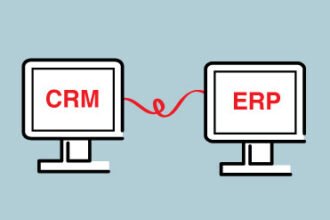

On August 30, Shaloo Shalini posted an interview with Dennis Hodges, CIO of Inteva on sramana mitra’s blog. The interview provides some interesting insights with regard to cloud computing and shows that ERP may start catching CRM in terms of cloud adoption. Read the full article and interview here.
Shaloo Shalini’s summary
The interview uncovers several cloud computing trends. One of them is the case of early adopters pushing cloud vendors to address integration between on-premise and cloud services. Once there is significant adoption, this may not be a scalable proposition, and eventually we expect several new players and innovation by third parties and entrepreneurs to help the cloud providers and cloud adopters work out integration.
The acquisition of Cast Iron may have given IBM some edge in integration within its own cloud and on-premise offerings, but that leaves the playing field wide open for other players and innovative solutions. Another trend we spotted is the pricing model by ERP vendors whereby they share a percentage of sales as their fees. Last, cloud-based printing solutions and easing the real customer problem of not being able to access attachments via a BlackBerry are some of the blue-sky opportunities for entrepreneurs to explore.
ERP software in the cloud before CRM
Inteva started cloud adoption with ERP instead of CRM. Dennis says that once the ERP implementation is complete, business intelligence “might be next”. This example is interesting because it contradicts the standard industry adoption process where companies start their cloud experience with CRM and move their ERP to the cloud later. Standard industry adoption is supported by the fact that in 2008, Salesforce.com had 11% of the CRM market, while all web-based and SaaS vendors only accounted for 4% of the ERP market.
During the interview, Hodges describes HR software as an application that has been put “in the cloud”. Although to be fair, he says that this is really “outsourced” instead of cloud. ERP Cloud News comment: the fine line between outsourcing services and putting software and services in the cloud is a debatable topic. In a previous post we covered the differences between cloud, hosting, and SaaS.
Cloud ERP requires in-house business skills
Ms. Shalini skillfully leads Dennis Hodges to a discussion regarding the impact of cloud and SaaS on his internal resources:
If I look at the SAP model I do not have a stable of ABAPers, FICO experts, or anything like that. I have the finance business analysts, the purchasing business analysts, and they can work across more than one module.
The point is that cloud ERP still requires business expertise, but IT specific operational tasks become simple because they are outsourced. Not mentioned in the interview is the fact that the business experts need to be more computer savvy than the old days of dictated letters and day-long meetings.
Dashboards and reporting are important
At the close of the interview, dashboards and reporting features are seen as critical requirements for a business intelligence system. Dennis says that the ability to take a massive amount of data and make it simple or graphical so it can be read by a CEO or CFO is needed.
ERP Cloud News commentary
This interview is evidence that in 2010, the ERP market may begin catching up with CRM in terms of SaaS/cloud adoption. Critical information delivered by SaaS CRM (centralized views of sales, pipelines, and opportunities) also needs to be provided by business intelligence tools (centralized views of revenues, costs, cash, forecasts) to continue accelerating the adoption of cloud ERP. As adoption grows, organizations will need to change to favor business experts with a technical background over technical experts with a business background.






